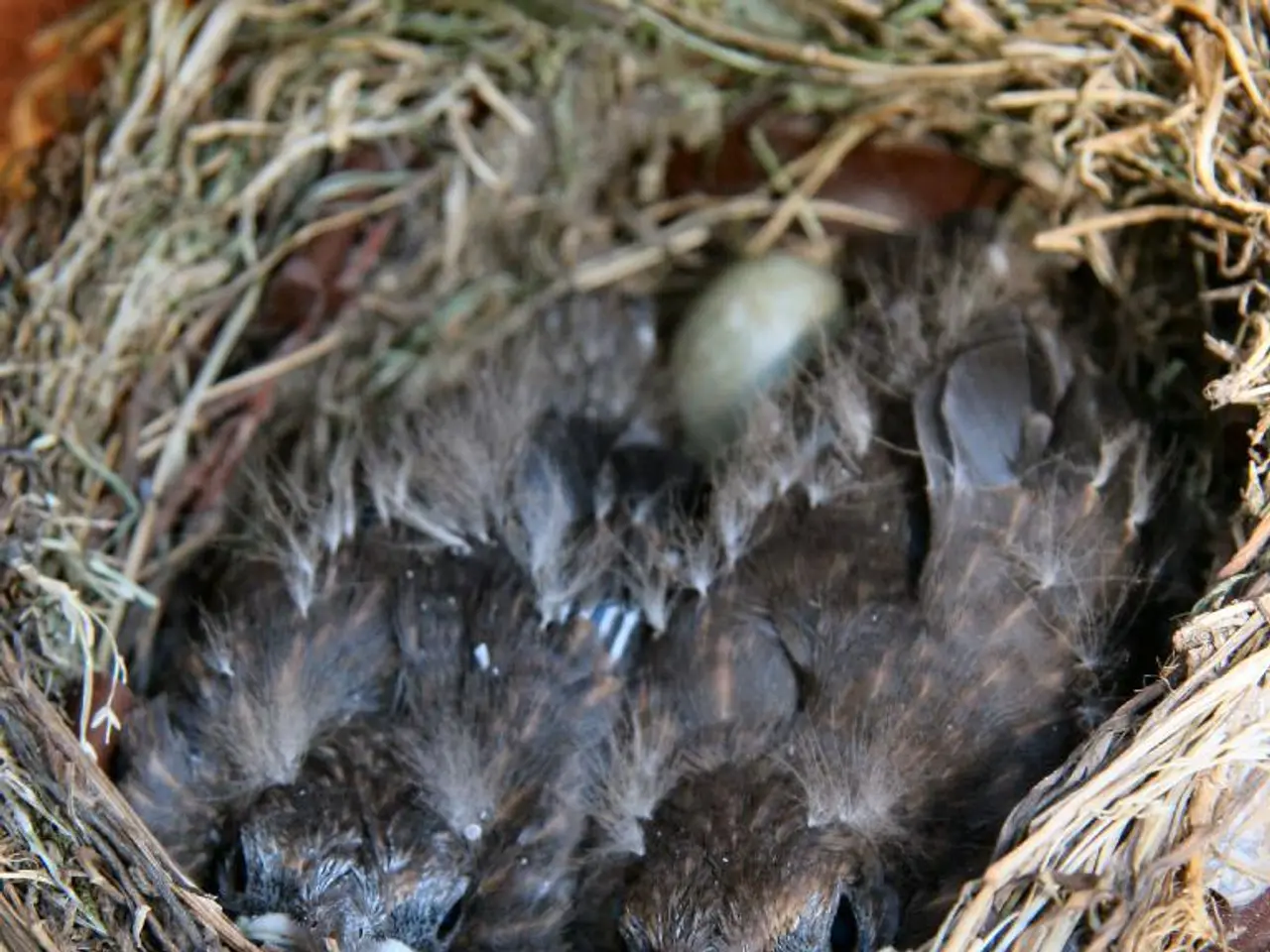researchers discover unexpected gender transformation in Australian avian species
In a groundbreaking study led by the University of the Sunshine Coast, researchers have discovered that sex reversal in wild birds is more common than previously recognized, affecting up to 6% of individuals in studied species. The study, published this week in the peer-reviewed journal Biology Letters, examined nearly 500 wild birds from five Australian species: Australian magpie, laughing kookaburra, crested pigeon, rainbow lorikeet, and scaly breasted lorikeet.
The study found sex reversal in all these species, with rates between roughly 3% and 7% depending on species. Interestingly, the majority of sex reversals involved genetically female birds growing male gonads. A notable finding was a genetically male kookaburra discovered to be reproductively active, with large follicles and a distended oviduct, indicating recent egg production.
The exact causes of this sex reversal remain unclear, but environmental factors such as hormone-disrupting chemicals building up in wild areas are suspected triggers. Researchers speculate that these factors could potentially alter developmental pathways, leading to this fluid and persistent sex determination into adulthood in birds.
The phenomenon was observed across multiple species sharing similar habitats in southeast Queensland, suggesting it might be relatively widespread in wild bird populations under certain environmental conditions. However, data remain limited to these species and region.
This sex reversal could have significant implications for population sustainability, particularly for threatened species. It could affect population sex ratios, reproductive capacity, and mate selection, all of which are crucial factors in conservation efforts.
Understanding how and why sex reversal occurs is vital for conservation and improving the accuracy of bird research. Potvin, one of the researchers involved in the study, emphasized this point, stating that this knowledge is crucial for improving the accuracy of bird research and for conservation efforts.
It's important to note that sex reversal is known in certain species of reptiles and fish, but it is thought to be rare in wild birds and mammals. This study, however, suggests that sex determination in wild birds may be more fluid than previously thought.
Despite the groundbreaking findings, the study does not confirm whether sex reversal is as rare in wild birds as previously thought, nor does it provide evidence of large follicles and a distended oviduct in genetically male birds, unlike the genetically male kookaburra discovered in the earlier study. Furthermore, the study did not specify whether the environmental factors causing sex reversal in wild birds are the same as those documented in frogs.
In summary, while the causes of sex reversal in wild birds remain largely unknown, environmental factors are leading hypotheses. Researchers emphasize the need for further studies to clarify triggers, prevalence across different species/environments, and ecological impact.
- The unexpected prevalence of sex reversal in wild birds, as identified in this study and others, underscores the importance of studying health-and-wellness issues related to environment-induced medical-conditions in these species.
- This study suggests that the fluid sex determination observed in some wild birds might have significant implications for the broader field of science, particularly in terms of understanding health and wellness in wildlife populations exposed to environmental factors known to disrupt developmental pathways.




